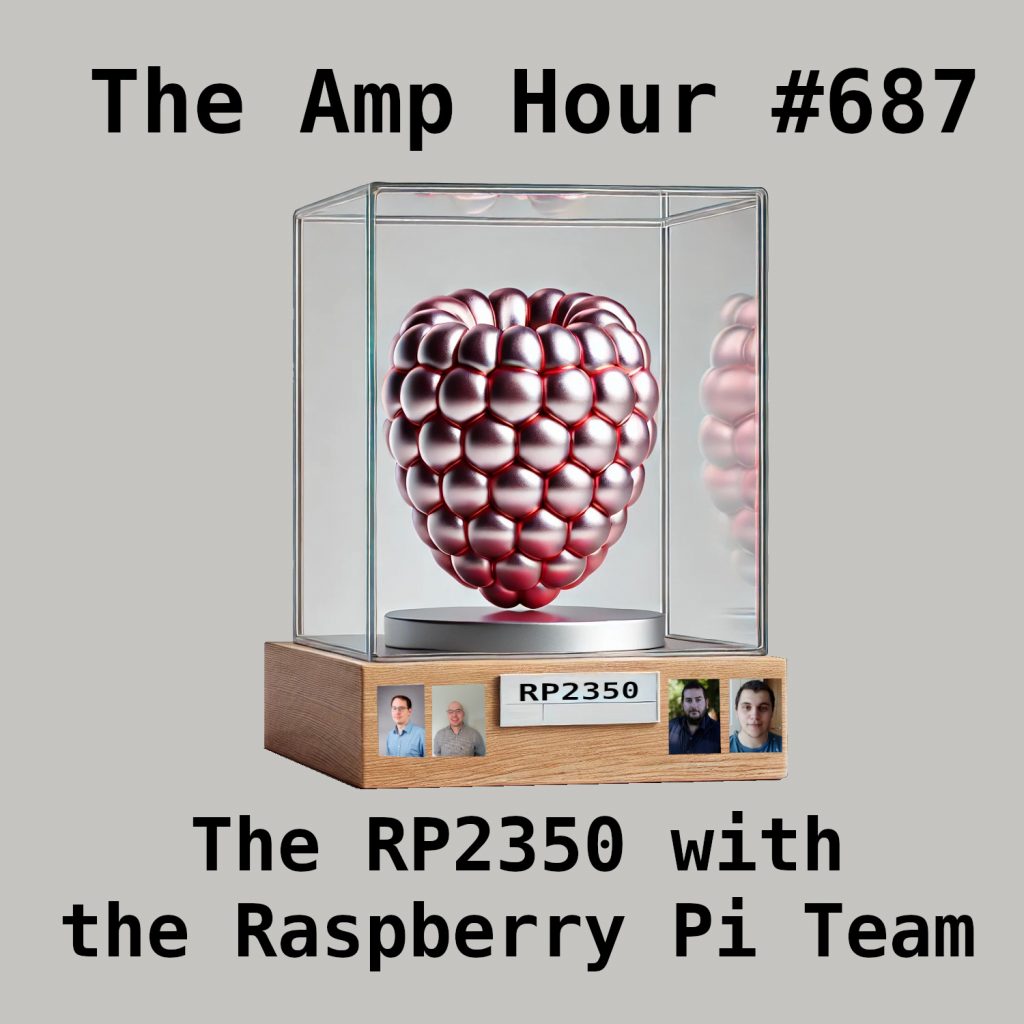Bra podcast
Sveriges mest populära poddar


Welcome James Adams, Chris Boross, Liam Fraser, and Luke Wren!
- The last time the RPi team was on the show was about the RP1 (#648)
- The order of parts being released was RP2040->RP1->RP2350
- Check out the datasheet for the RP2350
- Learning from silicon
- Security and power states
- The part is a “Dual dual core”
- The Arm side is a Dual M33
- The RISC V side is a Hazard 3 processor, designed by Luke based on a previous processor called the Hazard 5
- HB5
- There is a mux on the core and you select which side you’re going to use at boot
- There are 48 GPIO (but users always want more)
- Chris Boross (first time on the show) is on the commercial team. He’s seing interesting applications for the RP2350 including devices that are using it for motor control.
- They also have seen the part used in satellites because mRAM or masked ROM is less susceptible to radiation errors
- The PIOs have changed, but are more evolutionary from the RP2040
- The PIO allows you to create state machines that process inputs without processor interventions, basically like tiny cores
- 2 cores – 8 total
- Interesting PIO applications
- Luke still likes that DVI on 2040 that was discussed on the first episode they were on (#529)
- CAN is possible
- USB host / device
- MII / RMII
- ULPI – USB 2.0 Phy
- The core frequency only increased 133 MHz -> 150 MHz. There is tougher timing with the M33
- LVT – lower voltage threshhold
- 30 -> 40 pins
- There are now variants listed on the RP2350 product page (but not in mass production) that include flash in the SOM package
- RP2040 was one power domain
- “Powerman” (and of course AVR Man)
- Switched core
- AON – always on
- 32 kHz
- There is a C/C++ SDK that is the basis for other ports
- Security is a focus for the RP2350
- Bootrom in every chip
- Secure boot
- M33 features – secure / non-secure
- RISC V PMP
- RCP – Redundancy Coprocessor
- Raspberry Pi had a challenge / bounty for getting the secret out of the RP2350 OTP with secure boot
- One of the few silicon companies doing this sort of thing in public
- Past guest Aedan Cullen was one of the hacks called “Hazardous threes”. He gave a talk about it at 38C3
- Past guest Colin O’Flynn was also mentioned because collaboration around side channel attacks with the Chip Whisperer
- IOActive used a FIB – Fine Ion Beam – and passive voltage contrast to capture an impressive image of a decapped chip (see the RPi post)
- “Never want to see ‘novel technique’ in an email”
- Improving the RP2350 silicon
- How do you decide what to fix/leave?
- Can it be changed in metal/vias?
- SIO spinlock not being fixed
- Chicken Bit
- Filler cells are reprogrammable and help with fixes
- It costs approximately $50K per layer to change (ostensibly because of the high costs of masks)
- ULA – uncommitted logic array
- Die shrink doesn’t seem to make sense
- Will keep making each chip as long as 40 nm fabs are around
- Thinking about the RP2040
- The easiest way to get started is to use a Pico (RP2040) or a Pico 2 (RP2350). Both have connectivity options as well.
- Raspberry Pi is now a public company! Doesn’t change much other than the business scrutiny.
00:00
-00:00